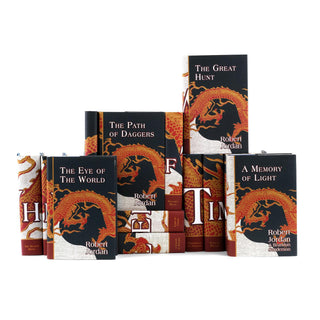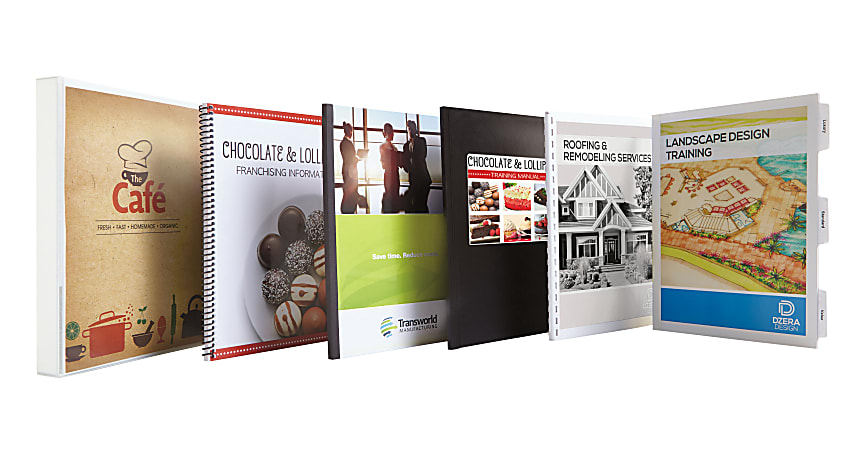Reasons Why Hardcover Books Are Still Popular Today
Reasons Why Hardcover Books Are Still Popular Today
Blog Article
A Comprehensive Guide to the Refine of Hardbound Books Printing
When you start the trip of hardbound publication printing, recognizing the entire process is vital. From preparing your manuscript to selecting the right materials, each action plays a crucial duty in the end product. You'll need to ponder layout components and printing methods that fit your vision. As you navigate via binding and quality assurance, you'll discover that every decision impacts guide's overall appeal. What comes next off in this intricate process?
Comprehending the Hardcover Book Framework
When you explore the world of hardcover publications, you'll rapidly notice that their framework is distinctive and willful. The external housing, commonly made from durable cardboard, provides durability and security. You'll find a textile or leather covering, which not only boosts aesthetics yet also contributes to guide's durability. Inside, the endpapers connect the cover to the text block, making certain a seamless interchange.
The text block itself consists of numerous trademarks, or folded sheets, stitched together for toughness. You'll see that the back is reinforced, enabling a smooth lay-flat analysis experience - hardcover books. In addition, guide's weight typically shares a feeling of quality and permanence
Hardbound publications typically feature a dirt jacket, which functions as a marketing device while safeguarding the cover. Recognizing these components aids you appreciate the craftsmanship behind hardcover books and their distinct appeal in the literary globe.
Manuscript Prep Work and Editing And Enhancing
Obtaining your manuscript all set for printing is vital, and it starts with appropriate formatting guidelines. You'll need to understand the editing process to refine your work and assure it reverberates with viewers. And also, understanding checking methods can assist you catch those annoying errors before your book goes to print.
Manuscript Formatting Standards
Appropriate manuscript format is essential for producing a professional-looking hardcover publication. Make certain to check your manuscript for uniformity in design, making certain that everything from punctuation to spacing adheres to your selected guidelines. Complying with these actions will certainly establish a strong structure for your publication.
Editing Process Essentials
Editing your manuscript is a necessary step that can transform it from a rough draft into a sleek end product. Begin by checking out your job critically, focusing on clarity, structure, and flow. Search for variances in your narrative, character growth, or argumentation. It's handy to take breaks in between rounds of modifying to acquire fresh point of views. Don't be reluctant to cut unnecessary content or rephrase awkward sentences; this will boost readability. Take into consideration looking for responses from relied on peers or expert editors who can supply important insights. Bear in mind, modifying isn't almost dealing with errors; it has to do with improving your voice and ensuring your message reverberates with visitors. Embrace the procedure, and you'll see your manuscript luster.
Proofreading Strategies Summary
As soon as you've polished your manuscript via editing and enhancing, the next step is to assure it's correct that might sidetrack readers. Beginning by relaxing after editing; fresh eyes catch blunders better. Read your manuscript out loud-- this helps you listen to unpleasant phrasing and place typos. Use digital devices like spell checkers for preliminary scans, yet don't count solely on them. Think about printing your manuscript; analysis on paper can disclose mistakes that screens miss out on. Concentrate on one sort of error each time, whether it's spelling or grammar, to stay clear of sensation overwhelmed. Lastly, get a relied on pal or specialist proofreader to give a fresh perspective. Their feedback can highlight problems you may ignore.
Creating the Publication Cover and Interior
When you're developing your book cover and interior, you'll want to focus on important design elements that capture your target market's focus. Picking the ideal typography designs and meticulously picking shades and imagery can make all the distinction in communicating your book's motif. Allow's discover how these choices can raise your work and draw in visitors.
Crucial Design Components
Developing a captivating book cover and a well-designed interior is necessary for attracting readers and enhancing their experience. Beginning with the cover; it's your initial impact. Choose colors and pictures that reflect your publication's style and mood. Make sure your title stands out and is legible, also in thumbnail size.
For the inside, emphasis on format and white area. A clean, well organized design aids readers browse effortlessly. Take into consideration utilizing phase headings and subheadings to check guide them via the material. Aesthetic elements, like graphics or pictures, can additionally enhance involvement but needs to match the message, not overwhelm it. Bear in mind, a cohesive layout throughout your publication fosters an expert appearance that can considerably influence a reader's decision to select it up.
Picking Typography Styles
Typography plays a crucial role in both the book cover and indoor layout, forming how readers view your material. When selecting typography designs, consider your publication's style and target market. A classic serif font may work well for literary fiction, while a contemporary sans-serif could match a modern story. Warranty readability; your message should be easy on the eyes, especially for longer passages. Pay attention to font size and line spacing, as these elements impact general flow. Mixing typefaces can add interest, but limit it to two or three to maintain coherence. Lastly, think of pecking order-- utilize different styles for headings and body text to direct visitors effortlessly with your work. Your typography choices will considerably affect the visitor's experience.
Shade and Imagery Selection
Choosing the best colors and images is vital for capturing readers' focus and sharing your book's themes. Begin by considering your genre; vivid colors could benefit a children's publication, while muted tones match a mystery novel. hardcover books. Usage imagery that reverberates with your material-- photos, illustrations, or abstract styles can boost your message
When making the cover, make certain the imagery doesn't bewilder the title Visit This Link and writer's name; clarity is crucial. This natural approach not only raises your publication's visual but likewise enriches the visitor's experience, making it a lot more remarkable.
Choosing the Right Paper and Materials
When choosing paper and products for your hardbound book, it's vital to ponder just how they'll impact the overall feel and look of your job. Beginning by choosing the best paper weight; much heavier stock usually shares quality and longevity, while lighter paper can create a more delicate touch. Consider the finish as well; glossy paper enhances colors and images, while matte can offer an advanced, underrated appearance.
Do not neglect concerning the cover products. Towel, natural leather, or published paper can establish the tone for your publication. If your task consists of photos, go with acid-free paper to avoid yellowing with time. Additionally, think concerning the binding products; making use of high-grade glue guarantees your book lasts.
Eventually, the choices you make below show your vision, so make the effort to sample various materials (hardcover books). Your selections will certainly help develop a publication that's not only aesthetically attractive however also long lasting and practical
The Printing Refine: Techniques and Technologies
A selection of printing techniques and modern technologies can bring your hardcover publication to life, each offering unique benefits. Digital printing is a preferred choice for brief runs, allowing for quick turn-around and economical services.
For unique effects, you may consider strategies like foil marking or embossing, which can add a glamorous touch to your cover. In addition, you can go with numerous inks, including green options that satisfy environmentally conscious visitors. Recognizing these strategies helps you make notified choices, guaranteeing your hardbound publication not just looks wonderful but also meets your production needs efficiently. Select the best method to raise your book's charm and effect.
Binding Approaches for Hardcover Books
Several binding techniques can transform your hardcover publication into a resilient and attractive product. One preferred alternative is the situation binding method, where the web pages are stitched together and after that connected to a stiff cover. This gives exceptional sturdiness and a professional appearance. One more approach is the best binding, which uses adhesive to hold the pages with each other, enabling for a streamlined spinal column yet much less durability contrasted to case binding.
You could also think about spiral binding, which permits your book to lay flat, making it suitable for workbooks or guidebooks. Each binding technique has its benefits and fits various requirements, so think concerning your book's purpose and target market when picking the ideal option for your project.
Quality Control and Final Touches
After choosing the right binding method for your hardcover book, quality assurance becomes important to verify your final product satisfies your expectations. Beginning by checking the published web pages for any type of errors or disparities in shade and design. You do not desire to miss any typos or misprints that could influence your viewers' experience.
Following, check the binding integrity. Validate the web pages are securely attached which the spinal column news is strong. A well-bound book not only looks specialist yet likewise feels durable in your hands.
Additionally, take notice of the cover. Seek any type of scuff marks or misalignments in the art work. If you have actually selected special coatings like embossing or foil stamping, ensure they're applied consistently throughout all duplicates.
Ultimately, carry out a detailed assessment of the entire set before transferring to distribution. In this manner, you can verify that every book shows your high standards.
Regularly Asked Concerns
How much time Does the Hardcover Publication Printing Process Commonly Take?

What Is the Minimum Order Quantity for Hardcover Books?
The minimum order quantity for hardcover books generally begin around 100 duplicates, yet it can differ based upon the printer. You need to consult your picked printing solution for their specific demands and prices.

Can I Publish Hardcover Books in Custom-made Sizes?
Yes, you can publish hardbound books in customized dimensions. Lots of printing solutions offer flexibility with dimensions, allowing you to select a style that fits your task. Simply validate the specifications before placing your order.
Are There Eco-Friendly Options for Hardbound Publication Printing?
Yes, you can locate eco-friendly options for hardbound publication printing. Several firms make use of recycled products and lasting inks. Just ask your printer about their green practices to guarantee your task straightens with your ecological worths.
What Are the Expenses Connected With Hardcover Book Printing?
When considering hardbound publication printing prices, you'll need to aspect in materials, design, and printing techniques. Added expenses like delivery and binding can likewise impact your general budget, so strategy appropriately for your task.
When you begin the trip of hardcover publication printing, understanding the whole procedure is crucial.A selection of printing methods and technologies can bring your hardbound publication to life, each offering distinct benefits. Exactly how Long Does the Hardbound Book Printing Process Typically Take?
The hardbound book printing procedure generally takes about 2 to 6 weeks.Yes, you can find eco-friendly alternatives for hardcover book printing.
Report this page